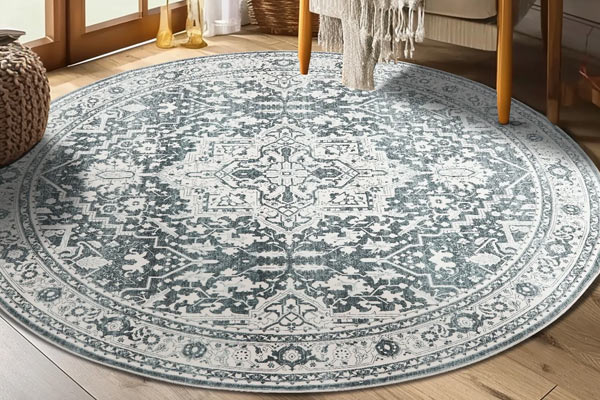A round rug is a circular piece of flooring decor that contributes both aesthetic appeal and functional benefits to various spaces. They are widely used in homes, offices, and commercial spaces as decorative elements that can tie together a room’s design while providing comfort underfoot. Often placed in living rooms, dining areas, or bedrooms, round rugs are versatile accessories that enhance the overall ambiance and style of an environment.

Contents
Definition of Round Rug
A round rug is typically defined by its circular shape and is made from various materials, with sizes varying from small accent pieces to larger area rugs. These rugs are characterized by their ability to soften hard surfaces, add warmth, and serve as focal points in a room. The unique form of round rugs allows them to fit seamlessly into spaces where traditional rectangular rug might not work as effectively, such as corners or underneath circular tables.
History and Origin
The origins of round rugs can be traced back to ancient cultures, where they were often woven by hand using natural fibers. Historical records suggest that circular textiles were used for both functional and ceremonial purposes across various civilizations. Over time, the craft of rug-making evolved, with artisans developing intricate designs and patterns to reflect cultural themes. The introduction of new materials and weaving techniques during the Industrial Revolution further transformed how round rugs were produced, making them more widely available and affordable.
Uses and Benefits
Round rugs serve a multitude of purposes in daily life, including:
- Aesthetic Enhancement: They can complement furniture styles and color schemes, adding a cohesive look to a room.
- Comfort and Warmth: By providing a soft surface to walk on, round rugs can make a space feel cozier, especially in homes with hard flooring.
- Defining Spaces: In larger areas, round rugs can delineate spaces, such as creating a conversation area in a living room or a cozy nook.
The advantages of round rugs extend beyond aesthetics; they are practical investments that offer durability and versatility.
How to Choose and Use Round Rugs
When selecting a round rug, consider several factors:
- Size: Measure the space to determine the appropriate diameter of the rug. Ideally, it should fit under furniture or define an area.
- Material: Choose a material that fits your lifestyle—wool for comfort, synthetic for durability, or natural fibers for sustainability.
- Design: Select a design that complements your existing decor and aligns with your personal style.
For effective usage, place the rug in a way that encourages conversation and movement. In dining areas, a round rug should extend beyond the edges of the table to accommodate chairs.
Maintenance and Cleaning
To ensure the longevity of your round rug, follow these maintenance tips:
- Regular Vacuuming: Maintain cleanliness by vacuuming regularly, which helps prevent dirt accumulation.
- Spot Cleaning: Use a damp cloth and mild detergent for spot cleaning spills to avoid staining.
- Professional Cleaning: Depending on the material, consider professional cleaning every few years to preserve color and texture.
Proper care not only keeps your round rug looking beautiful but also extends its lifespan.
Conclusion
In conclusion, round rugs are not only practical elements for home decor but also artistic expressions that enrich living spaces. With their unique characteristics, varied types, and multiple uses, they serve as vital components in both residential and commercial settings. When choosing and maintaining a round rug, it’s crucial to consider size, material, design, and proper upkeep practices to fully enjoy the benefits they offer. Incorporating a round rug into your living environment can create warmth, style, and a sense of harmony in your space.
